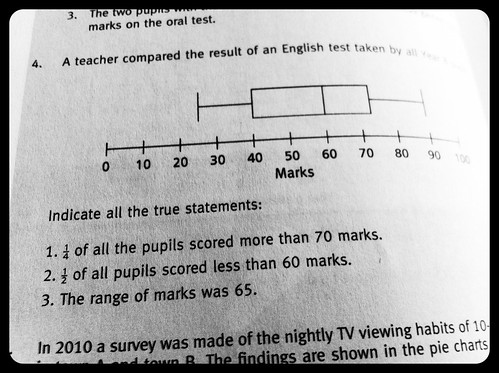Recently I’ve been going through the peculiar hell that is the Teaching Agency maths skills test. Anyone who wants to be a teacher has to pass this, even if you just want to teach GCSE English. Everyone says ‘you’ll be fine’ – at least everyone who’s not tried to sit this test. It’s been made more rigorous, you see. It’s a pig.
There are 12 questions that are spoken, and by the time the voice has finished, you have a mere 18 seconds to type the answer, without using a calculator. The problems are not trivial or simple. After your time is up, it clicks over to the next question. You can’t go back and review an answer. And if you get one straight away (working in radio means I’m quite good at adding and subtracting time), you can’t click forward and use the time for a harder question. It’s torture. If you’re a masochist with time on your hands, you can try it yourself here: http://www.education.gov.uk/QTS/Numeracy/assessment_engine.html
An esteemed colleague has suggested that, if asked for feedback, I should say that I’d have enjoyed the mental maths section much more if the questions had been read in person by the Secretary of State for Education. Unfortunately, my opinion has not been sought.
The next part of the paper comprises 16 questions, mostly about interpreting visual representations of statistical data: tables, scatter graphs, bar charts, even pie charts (which I now know, thanks to @clogsilk, are evil).
The sample papers all include something most of you will never come across: the box and whisker diagram. I met one candidate at an interview whose boyfriend had a maths degree, and he’d never heard of them. But I got to grips with them, I thought I understood them… until I tried the sample question pictured above (in a book on passing the exam).
On the diagram, the box & whiskers tell us: the lowest mark was 25, the highest mark was 90, the median mark (the one in the middle when you line them all up) was 60, and the inter-quartile range is from 40 to about 73.
These facts are not in question. True or false answers are required. Maths is an exact science, right? Some people find comfort in numbers. Numbers are not like people. Numbers are reliable. They do not do mad things randomly, like push you in a canal, fail to call you back or tell you that green isn’t your colour.
My answers were TRUE, FALSE, TRUE.
The book said: FALSE, TRUE, TRUE.
I think the book is wrong. For the first statement, they say that a quarter of the pupils DIDN’T get over 70. Well, the upper quartile is about 73, so a quarter of them certainly got more than 73, and the last time I checked, 73 was more than 70. Okay, that quarter didn’t get any marks between 70 and 72, but they DID get more than 70.
The second one is a bit less clear, but I’m sure I’m right and the book is wrong. Bear with me here. We know the median is 60. This means if you line all the scores up in a row, 60 will be in the middle – or the two values either side have a mean value of 60. We’re not told how many pupils there are. If there’s an odd number of pupils, that means one pupil scored exactly 60, because they are in the middle (the median). This means that half the pupils scored 60 or less, but it’s false to say that half the pupils scored less than 60 – slightly fewer than half got less than 60.
Some may say I’m splitting hairs, some say it’s the words that are the problem here, not the numbers. But the words seem quite clear to me. It’s the cold, hard binary answers that are wrong.
Anyway, I passed my skills test. With a little help from my friends.


Nice to see you engaged in reflective practice so soon in your new career ;-)
Is that what I’m doing? I’ll have to think about that…
I still maintain it’s bad wording and nothing wrong with the maths….
(And I told you you could do it.)
I suppose you’re right – it’s just that this is presented as a maths problem by maths boffins in a maths textbook. Maths’ fingerprints are all over this one. English has an alibi.
and thank you!